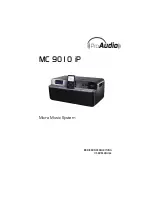
D8B Manual • Chapter 4 • page 100
Sample Tracking Setup
This diagram shows a typical hookup for tracking.
Four microphones are connected to channels 1–4 for
vocals. Two of them are condenser mics, which
require phantom power, so the +48V PH switch is
pushed in on those channels. A vocal enhancer is
connected to the channel 1 INSERT jack to add a
special effect to the lead vocal.
Note:
During tracking, dynamics control, like
compression and limiting, are often included (insert or
onboard) at the beginning of a signal path. Effects, like
reverb, delay, and chorus are best left for adjustment
during mixdown, or during tracking for monitor use
only.
Various instruments are connected to the line inputs
of channels 11–14, either directly from their line-level
outputs or through effects boxes or direct boxes.
Each input from channels 1–24 is assigned to a
tape output, which can be connected to an 8-, 16-, or
24-track recorder—simply use the appropriate I/O
card for your setup. You can assign any input (1–48),
any return (FX 1–16, RET 1–8), and Bus 1–8 to any
unused tape out using the ROUTE TO TAPE button
in the Bus Assignment Section (refer to Chapter 2
for review).
Monitoring
Connect the outputs from the recorders to the
TAPE Inputs on the Digital 8•Bus. This allows you
to monitor the signal as it’s being recorded
(assuming your recorder has that capability).
To do this:
• Assign channels 25–48 (or whatever channels are
being used for tape returns) to the L-R bus.
• In the Control Room Section, assign MASTER
L-R as the Control Room Source.
The configuration shown has two external effects
devices connected for monitoring. Aux 8 send goes
to a digital reverb, which has stereo outputs that
feed into the line inputs of channels 19 and 20.
Aux 11–12 goes out to a multi-effects stereo
processor, which then comes back to the Digital
8•Bus through the line inputs of channels 23 and 24.
In addition, Aux 1 and 2 are routed to the internal
FX Card, which processes the signal with whatever
plug-in has been downloaded to it. The processed
signal is returned to the L-R bus via the FX 1–4
channel strips in Fader Bank 3.
The signal at the CR MAIN, CR NEAR FIELD,
and the STUDIO OUT is determined by the Control
Room Source selection in the Control Room Section.
You can connect a pair of headphones to the
PHONES 1 or 2 jack and monitor the signal there as
well. Select CONTROL ROOM as the source in the
PHONES/CUE MIX 1 or 2 Section.
Summary of Contents for D8B 3.0
Page 8: ...D8B Manual Preface page 2 ...
Page 9: ...D8B Manual Chapter 1 page 3 Chapter 1 Getting Ready ...
Page 27: ...D8B Manual Chapter 2 page 21 Chapter 2 Where Is It ...
Page 47: ...D8B Manual Chapter 3 page 41 Chapter 3 What s On TV ...
Page 93: ...D8B Manual Chapter 4 page 87 Chapter 4 Applications ...
















































